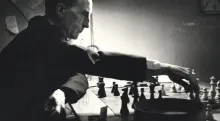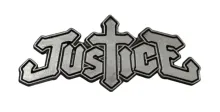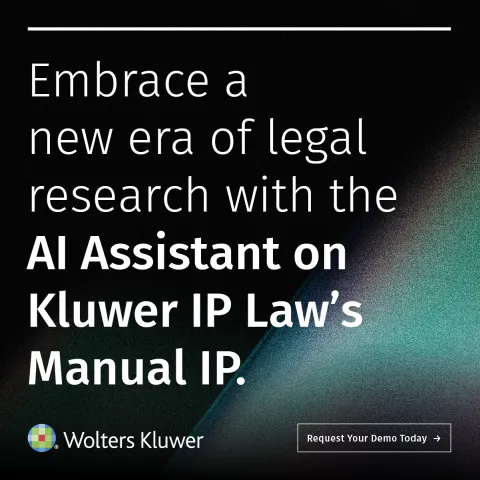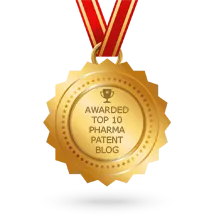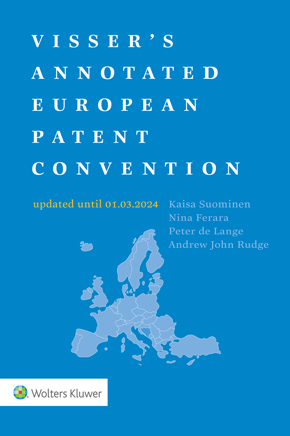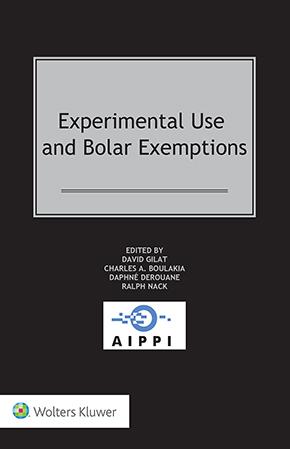Imminent Infringement: The UPC’s New Geography of Pharmaceutical Risk
October 30, 2025
For months, commentary on Boehringer has flourished across the European patent community. Yet amid the noise, the fundamental question—what the decision truly changes in the logic of injunctions—deserved a closer look. It was time to address it directly.
European patent law has just reached a decisive turning point. With the entry into force of the UPC, the concept of imminent infringement has gained central importance. This is particularly true in the pharmaceutical sector, where each month of exclusivity represents millions of euros and the timing of generic entry can fundamentally reshape market dynamics.
From Intent to Probability: Two Legal Logics
Before the UPC, each Member State applied its own approach. In France, Article L.615-3 of the Intellectual Property Code allows courts to order measures to "prevent imminent infringement." French practice historically emphasized outward indications of intent: filing price and reimbursement applications with CEPS, promotional campaigns, or communications to health authorities suffice to establish imminence (Paris Court of Appeal, 3 December 2010, Laboratoires Negma v. Biogaran). Conversely, purely administrative acts such as filing or obtaining a marketing authorisation do not suffice to demonstrate imminent infringement (Paris District Court, 19 August 2010, Sanofi v. Teva). A generic manufacturer filing its price and reimbursement application less than six months before patent expiry has generally been treated as non-infringing under the CEPS-LEEM framework; earlier filings typically require a non-infringement statement, transmitted to the patent holder, who may then initiate preliminary injunction proceedings. This is an administrative pricing and reimbursement framework, not a rule of patent law.
Germany favors a probabilistic analysis based on the sequence of commercial acts. German courts require concrete circumstances demonstrating that the potential infringer has already decided to infringe. Risk is most reliably neutralized by a strafbewehrte Unterlassungserklärung (a cessation declaration with contractual penalty); mere non-infringement statements are often insufficient.
The UPC standard centers on whether preparations are complete such that launch depends only on the defendant's decision. Article 62(1) of the UPC Agreement authorizes injunctions to "prevent any imminent infringement," while Rule 211(2) of the Rules of Procedure requires the applicant to provide "reasonable evidence to satisfy the Court with a sufficient degree of certainty that infringement is imminent." Court of Appeal decisions describe a "set-the-stage" test and apply a "sufficient degree of certainty" consistent with a more-likely-than-not threshold; NanoString primarily addressed validity but reflects that evidentiary standard. The UPC applies a holistic, evidence-based assessment, taking the national regulatory context into account as fact without applying national law.
Local Division practice notes indicate requirements for serious and concrete factual indications and attention to national regulatory context when assessing imminence. These observations anticipated the structure later formalized in Boehringer.
Boehringer v. Zentiva: When Preparation Becomes Performance
The Lisbon Local Division (UPC_CFI_41/2025, 8 May 2025) had initially denied Boehringer’s application for provisional measures, considering that Zentiva’s steps remained merely preparatory despite completion of the Portuguese Prior Evaluation Procedure (PEP). The Court of Appeal (UPC_CoA_446/2025, 13 August 2025) reversed, confirming that the PEP completion more than one year before patent expiry—without credible justification—constituted a contextual indicator of imminence. It further clarified that imminent infringement “may be characterised by certain circumstances which suggest that the infringement has not yet occurred, but that the potential infringer has already set the stage for it to occur,” a formulation now regarded as the cornerstone of the UPC’s preventive logic.
The Court organized its analysis around several guiding questions (often summarized in four parts by commentators), assessed case-by-case. First, it considered whether further administrative steps were required: the absence of Infarmed’s pre-notification did not preclude imminence; it could be completed at short notice. Second, the Court confirmed that participation in public procurement procedures could constitute an offer under Article 25 UPCA. Third, in Portuguese procurement practice, hospitals may deviate from a framework agreement where its use would lead to paying at least 10% more for a comparable product; this supported the inference that PEP completion enabled offers. Fourth, Zentiva provided no evidence that it was prevented from participating in procurement procedures; its only barrier was self-restraint. The Court thus concluded that Zentiva had established all conditions for infringement and that commercialization depended solely on its own decision. A unilateral non-launch statement does not, by itself, neutralize a risk otherwise shown to be more likely than not.
The Court also emphasized that Zentiva’s PEP had been obtained unusually early—more than one year before patent expiry—and that Zentiva had failed to explain why it would need that approval so far in advance. In light of this, the Court considered it more likely than not that Zentiva could offer its generic products to hospitals in Portugal without further administrative steps.
The Limits of Bolar and New Procedural Standards
Zentiva’s reliance on the draft Proposal for a Directive on the Union Code concerning medicinal products for human use (Article 85 of the draft) was rejected: the Court ruled that it applies only “existing legislation.” The pending reform, which would extend the Bolar exemption to pricing and reimbursement procedures, remained legally irrelevant.
The Court also confirmed that the existence of an injunction previously granted by the Portuguese IP Court based on the corresponding SPC did not remove the necessity of UPC relief. The Court of Appeal accepted that Zentiva would undercut Ofev by at least 30% and that entry would likely cause irreversible price erosion; this aligns with Sumi v. Syngenta (UPC_CoA_523/2024, March 3, 2025) on erosion justifying provisional measures. The Court accepted necessity on the basis that Zentiva’s actions had already generated expectations of generic availability among hospitals, creating a self-fulfilling commercial dynamic that justified intervention.
Under Rule 206(2)(d) RoP, urgency begins when the applicant possesses the facts and evidence necessary to bring proceedings. The Court identified 12 December 2024—the date Infarmed publicly approved Zentiva’s PEP—as the point from which Boehringer had sufficient evidence. Filing its application on 23 January 2025 met the diligence expected by the Court, which found the six-week delay compatible with urgency. References to roughly one month (Düsseldorf) and up to two months (Munich/Hamburg) are practice indicators, not hard limits.
Territorial Scope and Proportionality
By default under Article 34 UPCA, UPC injunctions cover all Contracting Member States where the patent is in force, subject to proportionality. The preliminary injunction in Boehringer was UPC-wide despite Zentiva holding marketing authorizations only in Portugal. This unitary reach—confirmed also in Sumi v. Syngenta—means that a single proceeding can trigger pan-European protection across 18 Contracting Member States as of September 2024.
This broad scope raises practical questions: if regulatory procedures differ between Member States, can imminence be assessed uniformly? The Court of Appeal explicitly recognized that while it does not apply national law, it must consider “the national regulatory and legislative context as a factual circumstance while not applying national law” (Boehringer, paragraph 62). This pragmatic recognition integrates decades of national expertise, particularly French jurisprudence that first articulated the logic of preventive injunctions. Proportionality, already embedded in Article 3(2) of Directive 2004/48/EC, functions as the bridge between national and UPC approaches: both systems now converge toward an overall balancing of interests grounded in concrete market realities.
Discreet Convergence, Profound Harmonization
Despite formal divergences, a deeper convergence emerges. Both French and UPC systems now operate through holistic appreciation of facts rather than isolated acts. Marketing authorization alone is insufficient; combined regulatory steps may evidence imminence depending on context. In France, obtaining a marketing authorization is neither an act of infringement nor an imminent threat (TGI Paris, 19 Aug 2010, Sanofi v. Teva, Taxotere; TGI Paris, 5 Apr 2011, Novartis v. EG Labo; CA Paris, 21 Mar 2012, Novartis v. Mylan, Rivastigmine; CA Paris, 23 May 2013, Sanofi v. Arrow, Irbesartan/Hydrochlorothiazide). However, it may contribute to evidence of imminent threat when combined with early CEPS filings or promotional steps. Under the CEPS-LEEM Framework Agreement, applications for pricing and reimbursement less than six months before patent expiry have generally been treated as non-infringing; earlier filings typically require a non-infringement statement communicated to the patent holder, which may serve as the basis for summary proceedings based on imminent threat. This approach confirms the nuanced interplay between regulatory readiness and intent.
The French notion of intent is absorbed into the UPC's probability calculus, while the UPC's procedural rigor feeds back into national reflexes. The result is what could be called a formal divergence but material convergence: two languages expressing a single judicial instinct—to foresee infringement without criminalising legitimate preparation.
A Geopolitics of Pharmaceutical Risk
The emergence of the UPC's objective test redefines the politics of pharmaceutical innovation. For originators, it restores confidence in exclusivity across eighteen jurisdictions through a single order. For generics, it compresses the window between regulatory readiness and patent expiry. Silence, once prudence, now becomes evidence: the absence of a clear non-infringement statement—or of an enforceable Unterlassungserklärung—may weigh against the defendant.
The dispute no longer concerns what is being done, but what could be done tomorrow. The law becomes predictive—a system of precaution as much as sanction. For innovators, this is a safeguard. For competitors, a warning.
The future, in the realm of pharmaceutical injunctions, is not what will happen—but what can no longer happen yet.
You may also like
